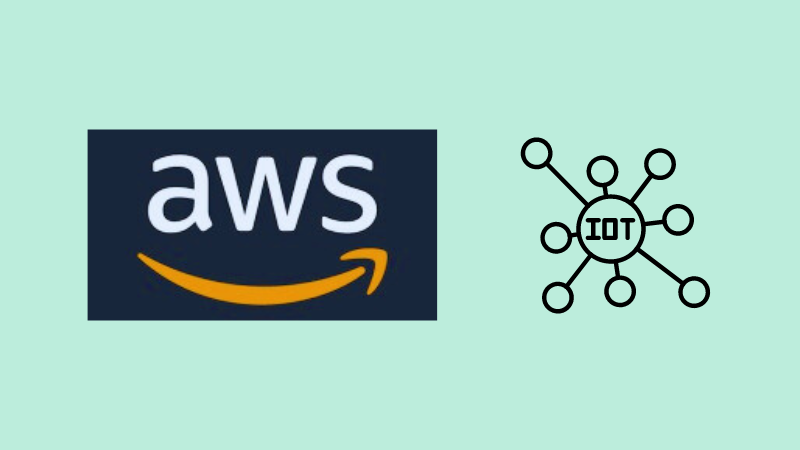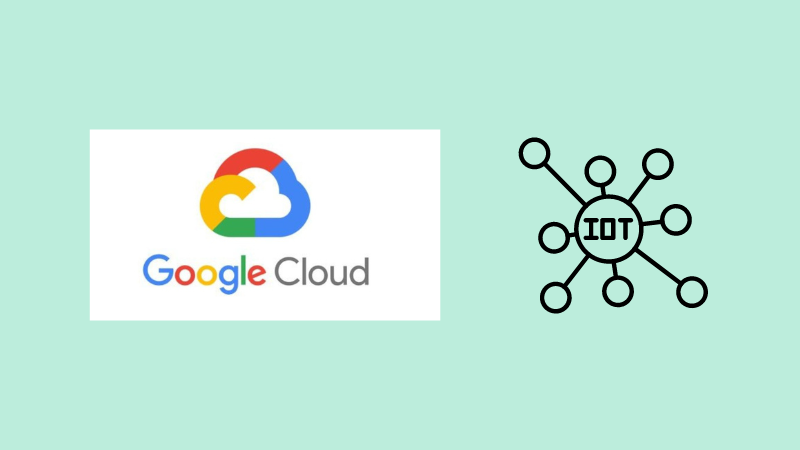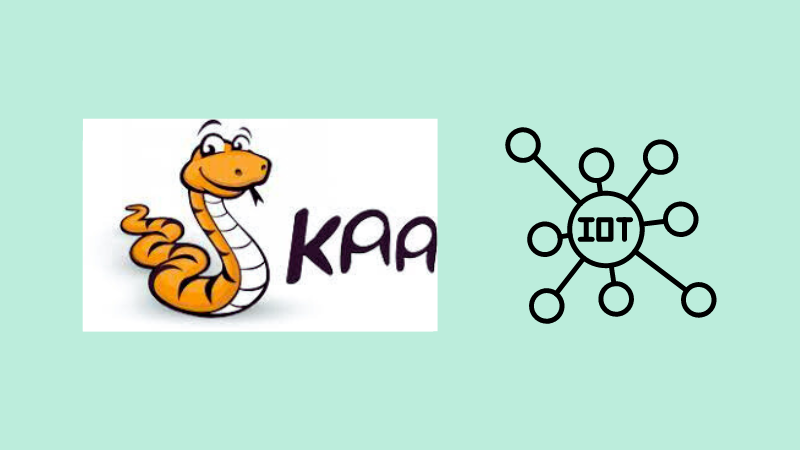The best IoT platforms provide the tools to efficiently control, watch, and analyze connected devices. They are important for anyone working with IoT systems.
This guide will look at some of the best IoT platforms currently available and highlight their main features and benefits.
Key Highlights
- IoT platforms are essential for managing and analyzing connected devices.
- They support connectivity, device management, data processing, and app development.
- AWS IoT Core is perfect for AWS users, allowing easy integration and management of millions of devices.
- Microsoft Azure IoT Hub offers strong security and real-time analytics with seamless Azure integration.
- Google Cloud IoT Core excels in data integration and machine learning for large projects.
- ThingSpeak is ideal for small IoT projects, providing quick setup and real-time data visualization.
- Kaa IoT Platform is flexible and user-friendly, supporting various devices and customization.
Best Internet of Things Platforms: Top 5
Now, we will discuss about the top five Internet of Things platforms:
1. AWS IoT Core
AWS IoT Core is ideal for companies that are already using AWS services. It integrates seamlessly with other systems and scales easily, making it a strong choice for managing complex IoT projects. The platform also provides extensive support and guides, helping to speed up the setup and development of new features.

- Functionality: AWS IoT Core excels at gathering, keeping, handling, showing, and overseeing devices. It works with many AWS services, offering a complete IoT answer.
- Devices Supported: Can handle millions of devices.
- Data Capacity: Deals with petabytes of data every day.
- Programming Languages: Works with Python, Java C++, and Node.js.
- Protocol Support: Uses MQTT, HTTP, and WebSockets.
- Cloud vs On-Premise: in the cloud.
Benefits
- Seamless integration with existing AWS services for easy IoT project expansion.
- Capable of managing millions of devices and processing large data volumes daily.
- Includes access control and data encryption for enhanced data security.
- Supports multiple programming languages and communication protocols for developer flexibility.
- Offers comprehensive documentation and support resources for simplified setup and
2. Microsoft Azure IoT Hub
Microsoft Azure IoT Hub is a top IoT platform known for its strong security and easy connection with other Azure services. It provides device management and real-time data analytics, making it ideal for Microsoft users.
- Functionality: Manages devices easily, secures communication, and processes data in real-time. It works seamlessly with Microsoft cloud.
- Devices Supported: Can support millions of devices.
- Data Capacity: Handles large amounts of data effectively.
- Programming Languages: Supports C#, Java, Python, and Node.js.
- Protocol Support: Compatible with MQTT, HTTPS, and AMQP protocols.
- Cloud and On-Premises: Works with both cloud and on-site setups, including Azure IoT Edge for on-premises use.
Benefits
- Ensures strong protection for data and devices.
- Works easily with other Azure services for a unified experience.
- Controls and watches a large number of devices efficiently.
- Provides real-time insights to improve decision-making.
- Supports both cloud and on-premises options for greater flexibility.
3. Google Cloud IoT Core
This IoT platform is an excellent choice for companies using Google Cloud infrastructure and services. It is a vital resource for analytics and machine learning and excels at IoT-related data integration.

- Functionality: It collects data, manages devices, and improves with analytics and machine learning.
- Devices Supported: Supports millions of devices.
- Data Capacity: Handles data up to an exabyte in capacity.
- Programming Languages: Supports Python, Java, C++, and Go.
- Protocol Support: Utilizes MQTT and HTTP protocols.
- Cloud vs On-Premise: It runs as a cloud-based platform built for cloud use.
Benefits
- It works well with other Google services, making it easy to build and grow IoT projects within Google’s ecosystem.
- It uses Google’s powerful tools to provide deeper insights from your IoT data.
- Google Cloud IoT Core allows you to process data instantly, so you can act quickly when needed.
- It handles large amounts of data and millions of devices, making it perfect for big IoT deployments.
- Easy to scale in the cloud without dealing with on-premises hardware.
4. ThingSpeak
ThingSpeak is perfect for small IoT projects requiring quick setup and real-time data. It’s great for exploring IoT without requiring a lot of infrastructure. Also, you can read more about what AIoT is.
- Functionality: It collects, analyzes, and displays sensor data in real time, which is ideal for small projects.
- Devices Supported: Supports hundreds of thousands of devices.
- Data Capacity: Manages moderate data volumes efficiently.
- Programming Languages: Works with MATLAB and Python.
- Protocol Support: Uses HTTP and MQTT protocols.
- Cloud vs On-Premise: Runs in a cloud-based environment.
Benefits
- Allows you to start projects quickly and easily.
- Lets you monitor and analyze data instantly.
- It requires little infrastructure, making it ideal for smaller projects.
- Easy to use, even for beginners or those new to IoT.
- Designed for smaller-scale IoT projects and research.
5. Kaa IoT Platform
Kaa IoT Platform helps businesses connect and manage Internet of Things (IoT) devices. It stands out for its flexibility and ease of use, allowing quick customization to fit different needs.

Kaa supports many devices and works well with existing systems. Its ease of use and flexibility make it a top choice for companies needing IoT solutions.
- Functionality: It highlights device management, data aggregation, and real-time analytics. A high level of customization is offered and the software is open-source.
- Devices Supported: Capable of scaling to accommodate millions of devices.
- Data Capacity: Provides robust data handling capabilities.
- Programming Languages: Compatible with Java, C++, and Python.
- Protocol Support: Includes MQTT, CoAP, and HTTP.
- Cloud vs On-Premise: Accommodates both deployment options.
Kaa IoT Platform Benefits
- Connects various devices like smart thermostats and security cameras.
- Easily integrates with your current software, like CRM or cloud services.
- Simple setup and monitoring, even for non-tech users.
- Adapts to different industries, from smart agriculture to smart cities.
Comparison of Top IoT Platforms
This table summarizing the key differences between the top IoT platforms:
| IoT Platform | Ease of Use | Scalability | Security | Cost | Features |
| AWS IoT Core | Moderate; requires some AWS knowledge | Highly scalable; handles millions of devices | Strong; offers access control and encryption | Pay-as-you-go; can get costly for large projects | Seamless integration with AWS services |
| Microsoft Azure IoT Hub | User-friendly for Azure users | Supports millions of devices; works on cloud and on-premises | High; enterprise-level security features | Flexible pricing; may be expensive for extensive use | Real-time analytics; integrates with Azure |
| Google Cloud IoT Core | Moderate; best for Google Cloud users | Scales to handle huge data volumes | Strong; uses advanced security protocols | Variable pricing based on usage | Advanced machine learning and analytics |
| ThingSpeak | Easy; ideal for beginners and small projects | Limited scalability; best for smaller setup | Basic; suitable for non-critical applications | Free for basic use; cost-effective for small projects | Quick setup; real-time data visualization |
| Kaa IoT Platform | Easy; open-source and highly customizable | Highly scalable; accommodates millions of devices | Moderate; offers good security with flexibility | Open-source; costs vary by deployment | Flexible options; works with various devices |
What is an IoT Platform?
An Internet of Things platform is a collection of tools and services designed to manage IoT devices and the data they produce. These IoT platforms perform several key functions:
- Connectivity Management: Ensures secure and reliable communication between devices and the cloud.
- Device Management: Handles the deployment, monitoring, and remote control of IoT devices.
- Data Processing: Collects, stores, and processes large volumes of data from IoT devices.
- Application Enablement: Provides development tools and services to quickly and efficiently deploy IoT applications.
Best IoT Platforms – Conclusion
When choosing an IoT platform, think about your business’s needs, like how it scales, stores data, and works with your existing systems.
Top IoT platforms include AWS IoT Core, Microsoft Azure IoT Hub, Google Cloud IoT Core, ThingSpeak, and Kaa IoT Platform. Each one has special features to help with your IoT projects.
FAQs about the Best IoT Platforms
1. What is an IoT Platform❓
An IoT platform manages IoT devices and their data. It connects devices, handles device management, processes data, and supports app development.
2. What are the best Internet of Things (IoT) platforms❓
Top IoT platforms are AWS IoT Core, Microsoft Azure IoT Hub, Google Cloud IoT Core, ThingSpeak, and Kaa IoT Platform, each excelling in integration, security, data processing, real-time data, and flexibility.
3. How does AWS IoT Core stand out❓
AWS IoT Core integrates well with AWS services, supports many devices, and offers strong security.
4. What makes Microsoft Azure IoT Hub a top choice❓
It provides strong security and effective device management and integrates smoothly with other Azure services.
5. Why is Google Cloud IoT Core a good option❓
It integrates well with Google services, uses advanced machine learning, and handles large-scale data processing.
6. What are the benefits of using the Kaa IoT Platform❓
Kaa offers flexibility, easy setup, broad device support, and smooth integration with existing systems.